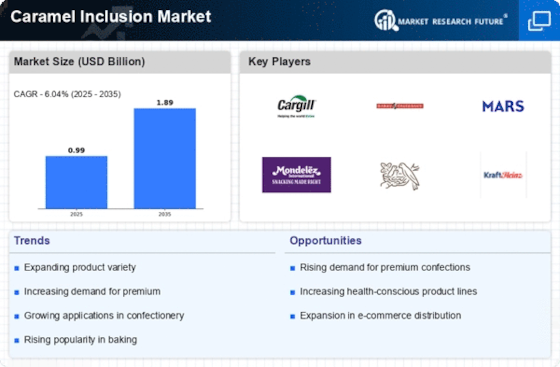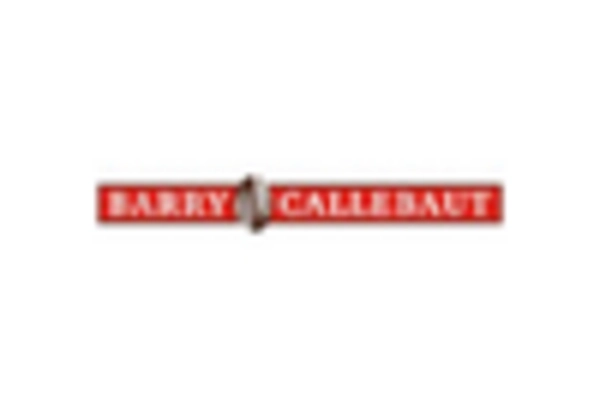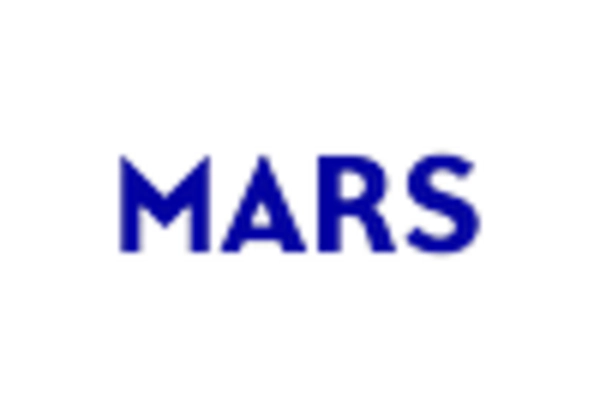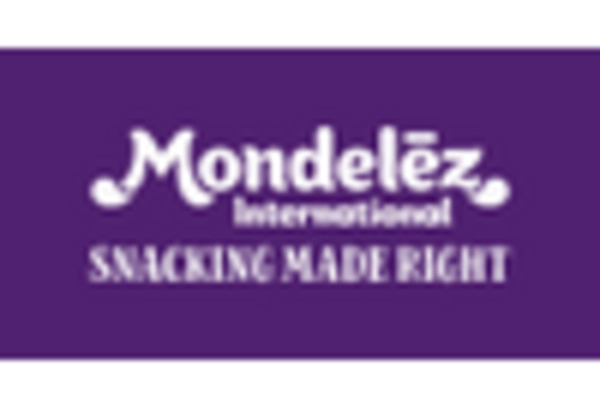Expansion of the Snack Food Sector
The Caramel Inclusion Market is significantly influenced by the expansion of the snack food sector. As consumers increasingly opt for on-the-go snacks, the incorporation of caramel in various snack products becomes more prevalent. This trend is supported by market data indicating that the snack food industry is projected to grow at a compound annual growth rate of 5% over the next five years. Caramel inclusions in snacks such as granola bars, popcorn, and chocolate-covered treats enhance flavor and texture, appealing to a broad audience. The growing demand for convenient and flavorful snack options suggests that the Caramel Inclusion Market will continue to thrive as manufacturers innovate to meet consumer preferences.
Emergence of E-commerce and Online Retailing
The Caramel Inclusion Market is significantly impacted by the emergence of e-commerce and online retailing. As consumers increasingly turn to online platforms for their shopping needs, the accessibility of caramel-inclusive products expands. Market data indicates that online food sales have surged by approximately 20% in recent years, highlighting a shift in consumer purchasing behavior. This trend allows brands to reach a broader audience and cater to niche markets that may not be served by traditional retail channels. The Caramel Inclusion Market stands to benefit from this digital transformation, as companies leverage e-commerce strategies to enhance visibility and drive sales.
Health-Conscious Innovations in Confectionery
The Caramel Inclusion Market is adapting to the health-conscious consumer trend by introducing innovative products that balance indulgence with nutritional considerations. As consumers become more aware of their dietary choices, manufacturers are exploring options such as reduced-sugar or organic caramel inclusions. This shift is reflected in market data showing a 15% increase in the sales of healthier confectionery options over the past year. By incorporating caramel inclusions that align with health trends, brands can attract a wider audience while maintaining the indulgent appeal of their products. The Caramel Inclusion Market, therefore, has the potential to thrive by embracing these health-conscious innovations.
Rising Popularity of Artisan and Craft Products
The Caramel Inclusion Market is witnessing a rising popularity of artisan and craft products. Consumers are increasingly drawn to high-quality, handcrafted items that offer unique flavor experiences. This trend is particularly pronounced in the chocolate and dessert segments, where artisanal brands often utilize premium caramel inclusions to differentiate their products. Market data suggests that the artisan food sector has expanded by approximately 12% in recent years, indicating a robust consumer interest in specialty items. As the demand for authenticity and craftsmanship grows, the Caramel Inclusion Market may see an influx of innovative products that highlight the artisanal qualities of caramel, appealing to discerning consumers.
Increasing Consumer Preference for Indulgent Treats
The Caramel Inclusion Market experiences a notable surge in consumer preference for indulgent treats. As consumers increasingly seek comfort foods, the demand for products featuring caramel inclusions rises. This trend is particularly evident in the confectionery and bakery sectors, where caramel's rich flavor profile enhances the overall sensory experience. Market data indicates that products with caramel inclusions have seen a growth rate of approximately 8% annually, reflecting a shift towards more decadent options. This inclination towards indulgence suggests that manufacturers may need to innovate and diversify their offerings to cater to evolving consumer tastes. The Caramel Inclusion Market, therefore, stands to benefit from this trend as brands explore new formulations and applications that highlight caramel's versatility.


















Leave a Comment